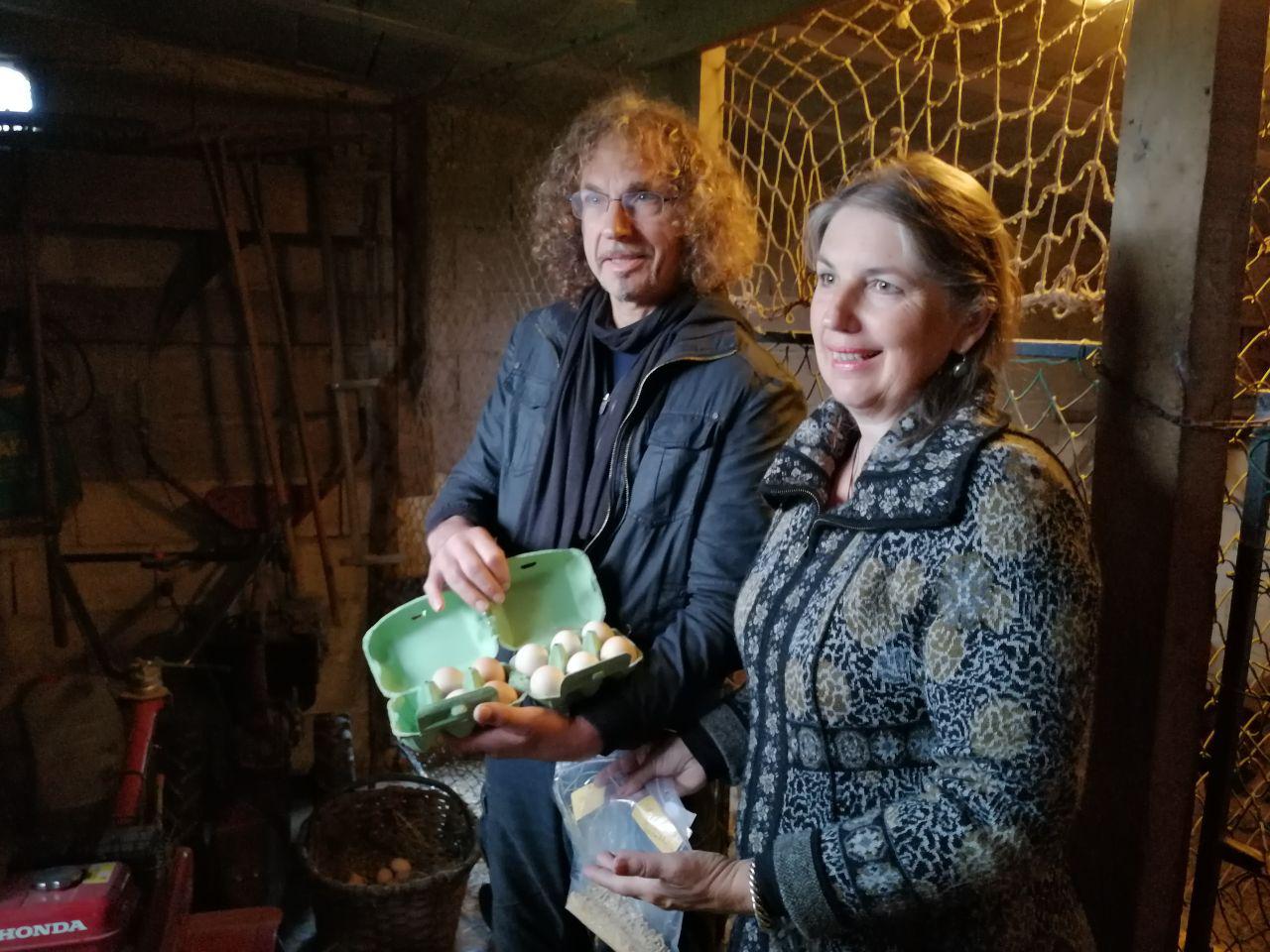New sample collection in the immediate vicinity of the Zubieta incinerator for contamination analysis
- The Anti-Incineration Movement EAM began its work in 2019 in the control town to measure the contamination generated by the incinerator of Zubieta. During these days, during the second weekend of October, ADEs volunteers have collected samples in collaboration with the ToxiWatch Foundation, which will perform analysis of them. This institution will analyze moss, water, land, tree leaves, etc. They're surrounding the incineration plant.

A group of volunteers from the Anti-Incineration Movement carried out the second weekend of October the collection of samples in the area of the incinerator of Zubieta following the strict protocol established by the ToxiWatch Foundation. As then, these days have also collected samples for further analysis: chicken eggs, leaves of various plants (pines Pinus radiata, Gorostia Ilex aquifolium, Ulex europaeus), moss, soil, river sediment and water.
This year the third sample collection was carried out within the citizen biomonitoring campaign organized in collaboration with the ToxiWatch Foundation. The first was carried out in autumn 2019, prior to the launch of the Zubieta incinerator, to set the level of contamination that could exist by then, ‘base-line’ or starting point. The document that collects the levels of contamination detected in the samples taken at that time was made public in its day by the Anti-Incineration Movement and can be seen on the Internet web “DEKKI Control Independiente de Contaminaciones de la Incineradora de Donostia”. The second sample collection was carried out in 2020, following the outbreak of the incinerator, and this year’s is the third.
The citizen control of the incinerator is an initiative promoted by Zubieta Lantzen and the Anti-Incineration Movement, which has been financed by citizen crowdfunding and with the collaboration of several institutions. Zubieta Lantze and EAM asked the Dutch foundation ToxiWatch (TW) to carry out a bio-monitoring study of the Zubieta incinerator “because citizens cannot trust neither the companies that manage the incinerator nor the authorities of Gipuzkoa, which are mixed in the same salsa, as the shameful lack of control of Zerkamatitka demonstrated.
The Dutch ToxiWatch Foundation participates in the working groups of the Basel and Stockholm Treaties within the United Nations and has been responsible for setting up annual studies. On the one hand, the eggs of free-raised chickens, as they are a good indicator to know the level of dioxins that can be in the soil and, in addition, are eggs that people eat so abundantly that they make dioxin and other POP contaminants reach humans. During these days, eggs have been collected from several cooks within a 5 km radius around the incinerator, which ToxiWatch has qualified as suitable in the first test of 2019.
In addition, with regard to plants, soils, waters and sediments, samples have been taken within 2 kilometres of the Zubieta incinerator, analysis dioxins, PCBs such as dioxins, estrogenic activity and heavy metals.
The Zubieta Lantzen association and the Anti-Incineration Movement carry out citizen control of the pollution of the Zubieta incinerator in collaboration with the ToxiWatch Foundation. In the photo, the toxicologist Abel Arkenbout and biologist Kirsten Bouman collecting samples of eggs in the Zubieta area in 2019.

Why is it so important to closely monitor the spread of the Zubieta incinerator? The ToxiWatch Foundation states nine reasons:
• The controls carried out by the incinerators today, in addition to prior notification to the owner, measure the emissions of a few hours: if the incinerator operates 8,000 hours, only 0.1% of them.
• The owners of incinerators use the Air Pollution Control Mechanisms to their liking.
• Controls are carried out only when the incinerator is “in normal operation”, but it is known that most pollutants are emitted “at unusual times, in the appearances and shadows of the furnaces, in the changes of filters, etc. ).
• The European Union only regulates dioxins and furans, but not many other persistent organic pollutants: dl-PCBs, brominated dioxins and PFOS.
• Proponents of incinerators claim that dioxins and other pollutants are disposed of at a certain temperature, but then the achievement of that minimum temperature throughout the burn mass is not sufficiently guaranteed.
• Nowadays, household waste can be increasingly considered as industrial waste, due to the composition of the materials sent to calcinate. So they ask for it to be burned at higher temperatures, for example by catching 1,100 degrees Celsius in the post-combustion zone, and not at the 800degrees Celsius that are being ordered today.




















